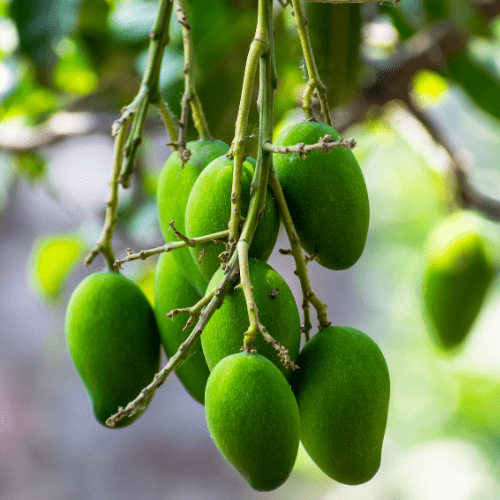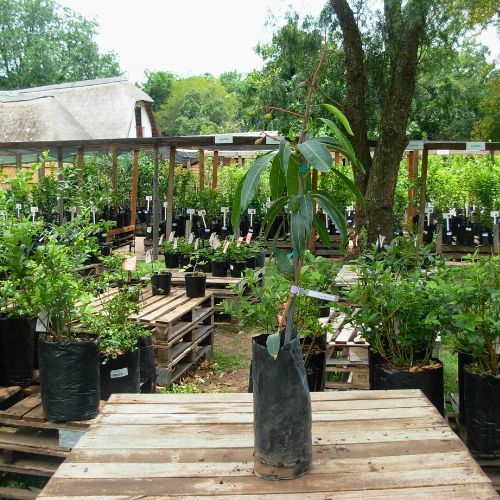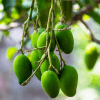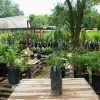Position
The Joa Mango thrives in full sun. Space about eight mts apart from other trees. This allows the tree space to spread and grow. It is a big tree and shouldn’t be grown in a pot. Mangoes thrive in temperatures between 10°C and 35°C, and are sensitive to frost and wind.
Size
This mango tree grows to a height of about 4 to 9 mts with a spread of 4 mts, depending on their growing conditions. However, you can prune it in summer and again in winter to prevent it from becoming too big for your space. You can also stake the branches horizontally to the ground.
Soil type
The Joa Mango thrives in sandy soil rich in organic matter and drains well, with a pH of 5.5 and 7.5. The hole should be deep because the tree’s roots extend far down. Add a bag of acid comppst to your soil.
Mulch
Apply organic mulch to your tree all year round.
Use from 2 to 5 centimetres of pine bark mulch to protect the roots from UV damage and drying out. It retains moisture, and maintains an optimal pH. Do not let the mulch touch the plant stem, as it may cause infection or rot.
Watering
Your mango tree needs a fair amount of water to flourish, especially between the first blooms and the time that the fruit. Water them generously to saturate the soil down to its long tap root. Then, allow the top 10 cms of the soil to dry out before you water the tree again. Don’t water the tree at all for two months before flowering. Water it again as soon as fruits begin to form.
Fertilising
Just before flowering, use a rapid-release nitrogen fertilizer to boost the health and abundance of fruit and flowers. Use our slow-release nitrogen-rich all plant fertiliser Apply 1 teaspoon every 4-5 months. The roots will absorb what they required.
Pruning
Remove dead and diseased limbs and thin out the canopy so the sun can penetrate it. Then, prune it once or twice yearly to keep it at the desired height.
Harvesting
Harvest your delicious mangoes when they change from green to mainly yellow. When the fruit is ripe, it should come off the branch easily when you gently tug it.










